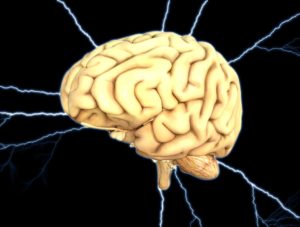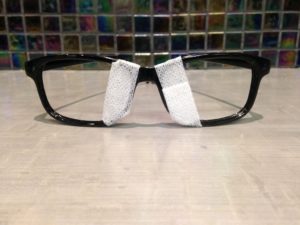I have decided to write about concussions as this is an area that is quite popular these days and something that I see a lot in private practice. I take a personal interest in brain and brain research so there is plenty to be said about this topic.
To start off with, a concussion is a form of mild traumatic brain injury (mTBI). It maybe caused by either a direct blow to the head, face, neck or elsewhere on the body.
How do you know if you have a concussion? After a hit or blow to the head have you ever experienced headaches, nausea, dizziness, confusion, memory loss, light sensitivity, fatigue or trouble sleeping? If so then you most likely have a concussion. However, from my experience, I have also seen clients develop concussion symptoms without even hitting their head. How is this possible? There is a really good TED talk by David Camarillo, that I would highly recommend watching. He is a former football player and a bioengineer studying concussions. It has been long thought that the brain is what moves around hitting the inside of the skull creating trauma to the outer surface of the brain. This is not true as there is very little movement of the brain and it is protected by Cerebral Spinal Fluid within the skull. Experts agree that the trauma is something that occurs deep within the brain from the brain tissue being stretched. Based on some work done in their lab it has been found that an area deep within the brain called the Corpus Callusom, could be the area damaged from being overstretched. This can all occur during forward, backward or side to side head movements during car accidents or in sports. Keep in mind trauma can occur without even hitting your head.
Imaging of the brain such as CT Scans and MRIs with concussions are usually normal therefore imaging is not indicated. There is more evidence of structural neurological disruption with newer imaging technology such as Functional MRI (Diffuse Tensor Imaging), Qualitative EEG (QEEG) and Magnetic Resonance Spectroscopy (MRS).
What occurs in the brain after a head trauma? It has been shown that there are some neurometabolic changes that occur in the brain after a head injury. This window is thought to be 10-14 days but some research shows that it may take up to 45 days for neurophysiology to return to normal. Its been shown that in the first 7-10 days there is a decrease in Cerebral Blood Flow (CBF) and Glucose in the brain. After this time period CBF and Glucose normalize. Once again within 10-14 days there should be a normalization of the neurophysiology in the brain.
Should I be resting and what is rest? You do need both physical and cognitive rest and this is the initial treatment. The patient and family should be educated on restricting the use of the following; watching TV, computer, reading, cell phone, physical activity, school, sports and socializing. The patient should be advised on increased sleep, hydration and eating well. I should warn you that there is limited research on rest.
How long should you rest for? The research is still unclear on this. Some evidence states no longer than 48 hours, but you need to start some activity within 2-7 days at the latest. However, every human is different and symptoms and tolerance should be the guide.
What should I do during the rest stage? Listen to an audio book, listen to quiet music, meditation or relaxation activities, gentle yoga, anything leisurely that relaxes you such as knitting. Always use a timer and do not overdo any activity. Make sure to limit your activity.
I cannot stress this enough that conserving your energy during concussions is very important!
How to integrate the patient back into their daily activities? There is a system similar to the weight watchers program where each activity is equivalent to a certain number of points. Sometimes patients are doing too much and are having trouble managing their symptoms. Some are not doing enough. How it works is that patients are initially given 15-20 points per day. Activities are given a point value, based on the level of difficulty. Patients are to plan their day to ensure that they have enough points to do the tasks they want to do during the day.
For example…..Going grocery shopping is equivalent to 5 points, talking on the phone is equivalent to 2 points per 15 minutes, washing the dishes is 1-2 points, computer use is 2 points per hour, meal preparation is 2-3 points, watching a hockey game is 5 points. Some other common activities such as attending an appointment is 3-5 points, working at your job is 1-2 points per hour, reading is 2 points per hour and watching TV is 2 points per hour. Hope you get the point here, with no pun intended. Once you start feeling better you can slowly increase the number of points that you are allowed per day. Please speak to your physiotherapist about this system.
For an athlete to get back to sports/play the “Zurich Guidelines” are one of the programs used to determine when they should go back to sports. There are 6 levels that the therapist takes them through. Level 1 is where the athlete is not to perform any activities, level 2 is light aerobic exercise (light jogging, stationary bike) and level 6 is where they are back to full activities. One must wait 24 hours between each level when they are being tested. If the athlete has symptoms during one of the levels then they have to go back to the previous level.
I usually get asked will my concussion symptoms get better? You may have heard of the phrase post concussion syndrome(PCS)? Well this is where symptoms persist past 4 weeks. However, if you do the right things, 80-90% of people who experience mTBI will recover fully. The remaining 10-20% will develop PCS.
There are some interesting management strategies for concussion symptoms. A lot of people have a challenging time trying to reintegrate themselves back to reading or using a computer. On a computer, the glare and backlight of a computer screen can cause light sensitivity and headaches. I find that using “coloured overlays”, which are coloured transparent sheets that one uses as dividers in binders to separate pages/sections work very well. You can buy these from any stationary store such as Staples. Just place the transparent coloured sheet (green, yellow, blue, pink or red, which ever one works best for you) in front of the computer screen and this will make a world of difference when you are looking at the screen. You can also use these on tablets, or cell phones. You may just have to cut them to make them smaller so that it fits your tablet and cell phone. You can also change the font size so that it is larger when using your computer. You may also use a blue light filter for your smart phones. Simply check out f.lux on your IOS. This works well is you have light sensitivities.
A lot of people with concussions have a hard time focusing while reading a book or a magazine or watching TV. There is something called “Binasal Occlusion”. It works great. It involves using eyeglasses. I would suggest going to the dollar store to purchase a pair of glasses. You simply pop out the lens and then add cloudy scotch tape to the edge of the glasses on both sides. Please see the picture below. It can be put on vertically or on an angle. You can do this over top of your existing lens if you wear prescription glasses. You will notice a dramatic improvement in your ability to read and concentrate. A high percentage of clients have been successful with this strategy.
From my personal experience I find that performing visual exercises are very important. In addition, balance exercises are implemented as part of the rehab. It is crucial to start with a rehabilitation program involving vision and balance exercises with a physiotherapist.
Treating concussions is complex and can take some time to recover. In addition to exercises, it is important to receive other treatments such as manual therapy and acupuncture for headaches and neck pain.
These are just a few of the strategies that can be used to help manage your symptoms. There are plenty more that can assist you.
Until next time keep smiling, be happy and stay present in the moment.
REFERENCES:
1)Shannon McGuire (PT), Concussion Management Workshop. London, Ontario 2016.
2)David Camarillo, Why helmets don’t prevent concussions – and what might. September 2016.
3)Ciuffreda, K, Yadav N, Ludlam, D. Effect of binasal occlusion (BNO) on the visual-evoked potential (VEP) in mild traumatic brain injury (mTBI). Brain Injury 2013.


